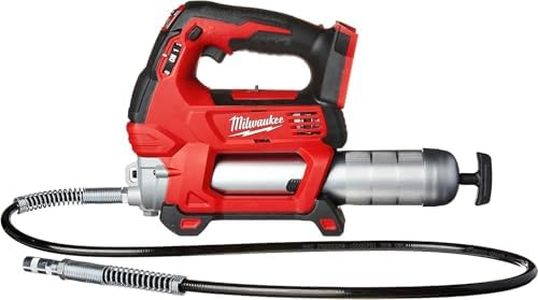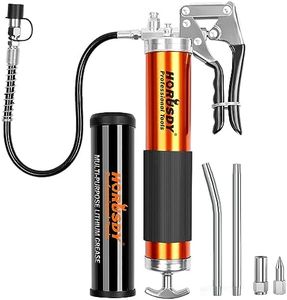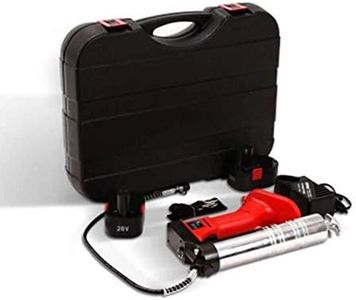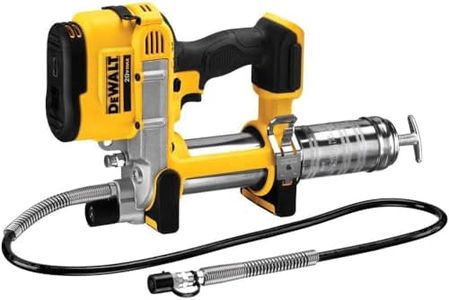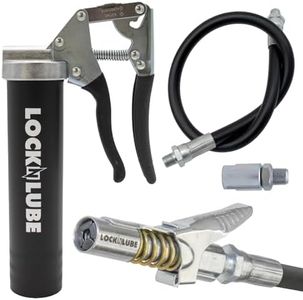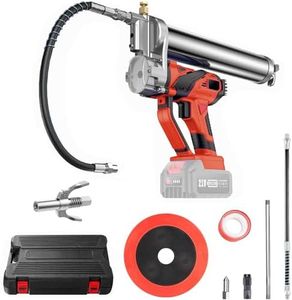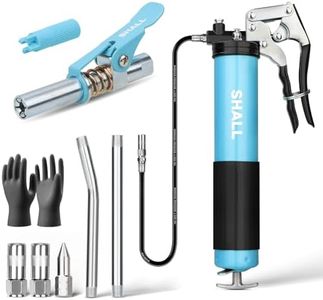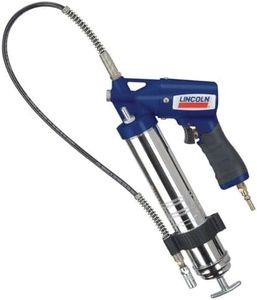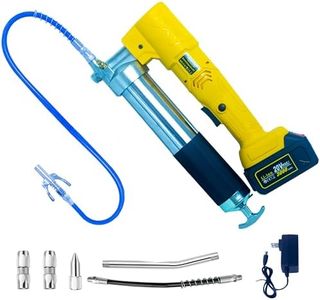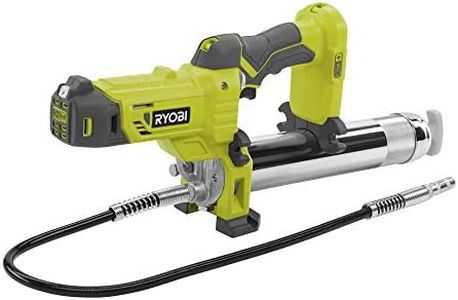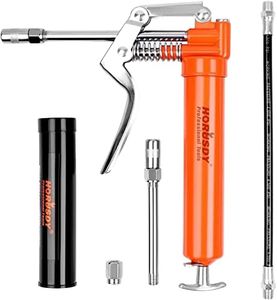We Use CookiesWe use cookies to enhance the security, performance,
functionality and for analytical and promotional activities. By continuing to browse this site you
are agreeing to our privacy policy
10 Best Grease Guns
From leading brands and best sellers available on the web.Buying Guide for the Best Grease Guns
Choosing a grease gun may seem simple, but picking the right one can make regular maintenance tasks easier, cleaner, and more precise. Think about how often you’ll use the grease gun, the types of equipment you need to lubricate, and how comfortable you feel using different types of tools. Understanding the key specifications can help ensure your grease gun meets your regular needs and doesn’t end up unused in the toolbox.Type (Manual, Pneumatic, Battery-Powered)This refers to how the grease gun is powered and used. Manual guns work by hand, pneumatic guns use compressed air, and battery-powered guns use rechargeable batteries. Manual grease guns are straightforward and suitable for occasional or light jobs; pneumatic ones are ideal if you already have an air compressor and need to do a lot of greasing quickly; battery-powered models are best when you want both portability and less exertion for frequent or heavy tasks. Choosing the right type comes down to thinking about your workload—light, moderate, or heavy—and the gear you have at hand.
Pressure Rating (PSI)PSI stands for Pounds per Square Inch, which represents how much pressure the grease gun can generate. Lower PSI ratings are fine for regular, everyday maintenance tasks, while higher PSI models are essential for heavy machinery or stubborn fittings. If you mainly use the gun for general household or small equipment, a basic PSI will suffice, but if you’re working on farm vehicles or industrial gear, look for models with a higher maximum PSI.
CapacityCapacity means how much grease the gun can hold at once, usually measured in ounces, cartridges, or grams. A higher capacity means less frequent refills, which is convenient for large or multiple jobs. However, for occasional users, a smaller capacity can make the grease gun lighter and easier to handle. Think about the amount of greasing you do at a time to decide if a larger tank really benefits you.
Loading Method (Cartridge, Bulk, Suction-Fill)This describes how grease is loaded into the gun. Cartridge-loading is clean, fast, and simple, just insert a grease cartridge. Bulk loading means scooping from a container, which can get messy but saves money over time. Suction-fill picks up grease directly from a bulk can using vacuum action. If you prefer quick and clean refills, go for cartridge types; if you handle a lot of greasing and don’t mind getting your hands a bit dirty, bulk or suction-fill may suit you.
Hose LengthThe hose or nozzle length affects how easily you can reach tight or awkward spots. Short hoses are easier to control, while longer hoses give you better access to hard-to-reach fittings. If your equipment is compact and fittings accessible, a short nozzle works well. If you need to squeeze into awkward spots, choose a gun with a longer or flexible hose.
Durability and Build QualityDurability refers to the materials used and how robust the grease gun feels. All-metal construction is usually more durable than plastic, especially for frequent or professional use. If you plan to use the grease gun regularly or in tough environments, pick one that feels solid and has positive user feedback for reliability. For lighter use, basic build quality is typically enough.
Ease of Use and MaintenanceThis includes factors like ergonomic design, trigger force, priming ease, and how simple the gun is to clean. Comfortable handles, easy priming (getting grease flowing), and accessible parts for cleaning or unclogging make a big difference in everyday use. If you value convenience and don’t want extra fuss, prioritize models noted for easy operation and clear maintenance steps.
